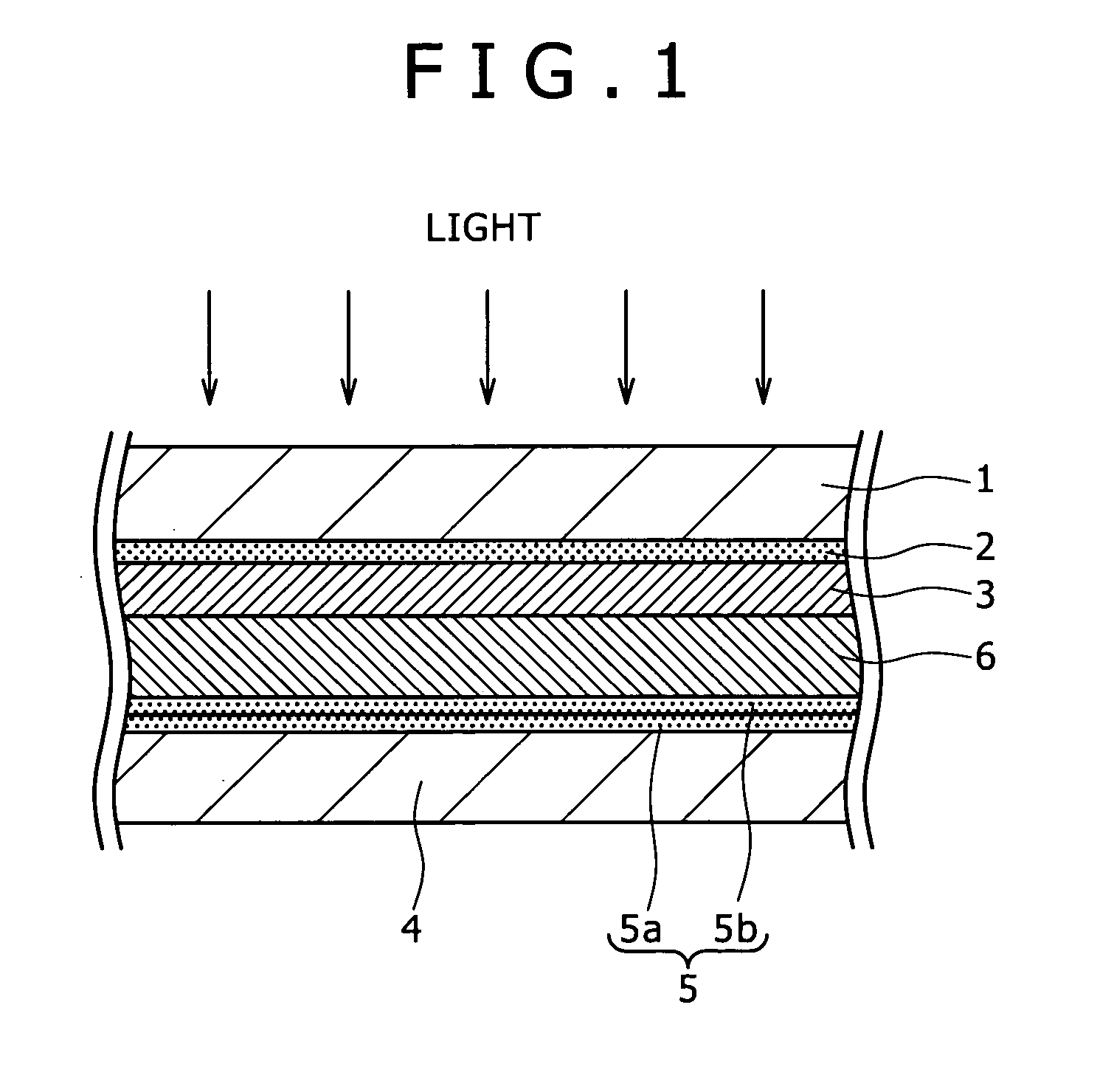Dye sensitized photoelectric conversion device and manufacturing method thereof, electronic equipment, and semiconductor electrode and manufacturing method thereof
a sensitized photoelectric and manufacturing method technology, applied in the direction of sustainable manufacturing/processing, final product manufacturing, transportation and packaging, etc., can solve the problems of low productivity, disadvantage in view of cost, and large installation burden, and achieve the effect of reducing the efficiency of photoelectric conversion and remarkably lowering the quantum yield
- Summary
- Abstract
- Description
- Claims
- Application Information
AI Technical Summary
Benefits of technology
Problems solved by technology
Method used
Image
Examples
example
[0092]Fine TiO2 particles were used as the fine semiconductor particles. A paste in which fine TiO2 particles were dispersed was prepared with reference to Hironori Arakawa, “Recent Advances in Research and Development for Dye-Sensitized Solar Cells” (CMC) p. 45-47 (2001) as described below. 125 mL of titanium isopropoxide was dropped slowly into 750 mL of an aqueous solution of 0.1M nitric acid under stirring at a room temperature. After the completion of the dropping, the solution was transferred to a thermostable bath at 80° C., and stirred for 8 hours to obtain a clouded semi-transparent sol solution. After that, the sol solution was allowed to cool to a room temperature, and filtered through a glass filter, and it was measured up to 700 mL. The obtained sol solution was transferred to an autoclave and, after hydrothermic treatment at 220° C. for 12 hours, applied with a dispersing treatment by conducting a supersonic treatment for 1 hour. Next, the solution was concentrated by ...
PUM
 Login to View More
Login to View More Abstract
Description
Claims
Application Information
 Login to View More
Login to View More - R&D
- Intellectual Property
- Life Sciences
- Materials
- Tech Scout
- Unparalleled Data Quality
- Higher Quality Content
- 60% Fewer Hallucinations
Browse by: Latest US Patents, China's latest patents, Technical Efficacy Thesaurus, Application Domain, Technology Topic, Popular Technical Reports.
© 2025 PatSnap. All rights reserved.Legal|Privacy policy|Modern Slavery Act Transparency Statement|Sitemap|About US| Contact US: help@patsnap.com



